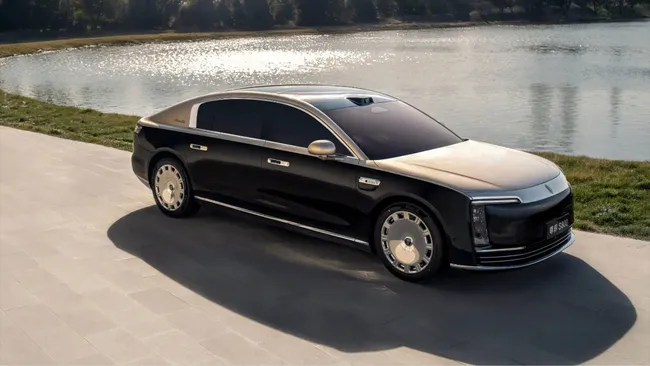
The automotive industry is constantly evolving, with electric vehicles (EVs) leading the charge toward sustainability and innovation. Recently, Huawei, a global tech giant renowned for its advancements in telecommunications and electronics, announced a groundbreaking development in EV battery technology. Their new solid-state battery claims an astonishing 1,800-mile range and rapid charging capabilities, promising to revolutionize electric mobility. But as with any bold claim, questions arise about the feasibility and real-world application of this technology. Let’s take a closer look at Huawei’s latest breakthrough and what it could mean for the future of electric vehicles.
Huawei Unveils Revolutionary Solid-State EV Battery with 1,800-Mile Range
Huawei’s new solid-state EV battery marks a significant milestone in battery technology, promising a staggering 1,800 miles of driving range on a single charge. This figure eclipses most current EV ranges, which typically hover around 200 to 400 miles, offering potential for longer journeys without frequent recharges. The secret lies in the solid-state electrolyte, which replaces the liquid electrolyte used in traditional lithium-ion batteries. This shift not only enhances energy density but also improves safety by reducing the risk of leaks and fires.
The advantages of solid-state batteries aren’t just about capacity. Huawei’s design aims to address common EV concerns such as battery degradation and thermal stability. The solid electrolyte allows for higher operating temperatures without compromising safety, translating into longer-lasting batteries that can withstand more charge cycles. Additionally, the increased energy density means manufacturers can either extend vehicle range or reduce battery size and weight, leading to more efficient and lightweight vehicles. Huawei’s innovation could set new standards for what consumers expect from electric cars in terms of durability and performance.
However, translating laboratory breakthroughs into mass production remains a challenge. The manufacturing process for solid-state batteries is complex and costly, often requiring specialized materials and techniques. While Huawei claims to have overcome many of these hurdles, industry experts are cautious about whether this technology can be scaled up quickly and affordably. Still, the promise of an EV with such an extensive range could accelerate adoption and reshape the competitive landscape of electric mobility, provided the technology proves viable at commercial levels.
Fast Charging Breakthrough: Recharging in Under 5 Minutes Explained
Perhaps even more impressive than the range is Huawei’s claim that its solid-state battery can be recharged in less than five minutes—a feat that could dramatically reduce “range anxiety” for EV owners. Traditional charging times for electric cars can range from 30 minutes to several hours, making rapid charging a critical factor in mainstream adoption. Huawei’s innovation leverages the stability and high ionic conductivity of the solid electrolyte, enabling much faster energy transfer during recharging.
This accelerated charging process involves advanced thermal management systems that keep the battery cool and safe during rapid recharging. The company has also developed proprietary charging technology that optimizes the flow of electricity, ensuring minimal battery degradation even with frequent fast charges. The combination of these innovations means drivers could top up their vehicles quickly on long trips, akin to refueling a gasoline car, which addresses one of the biggest barriers to EV adoption—convenience.
Nonetheless, critics and industry insiders are questioning whether such rapid charging is truly sustainable long-term. Fast-charging at this scale can generate significant heat and stress on the battery, potentially affecting its lifespan over time. Huawei claims their battery design mitigates these issues, but real-world testing and long-term data are needed to verify durability. If they succeed, this breakthrough could propel electric vehicles into a new era of practicality, turning fast charging from a challenge into a standard feature.
Huawei’s announcement of a solid-state EV battery offering 1,800 miles of range and under five-minute recharging is undoubtedly exciting news that could redefine electric mobility. While the technology promises increased safety, efficiency, and convenience, it also raises questions about scalability and long-term durability. As the automotive industry watches closely, the true test will be in how quickly and effectively Huawei can bring this innovation from the lab to the roads. If successful, consumers around the world may soon experience a new level of freedom and ease in electric vehicle travel—making that future of ultra-long range and rapid charging a very real possibility.